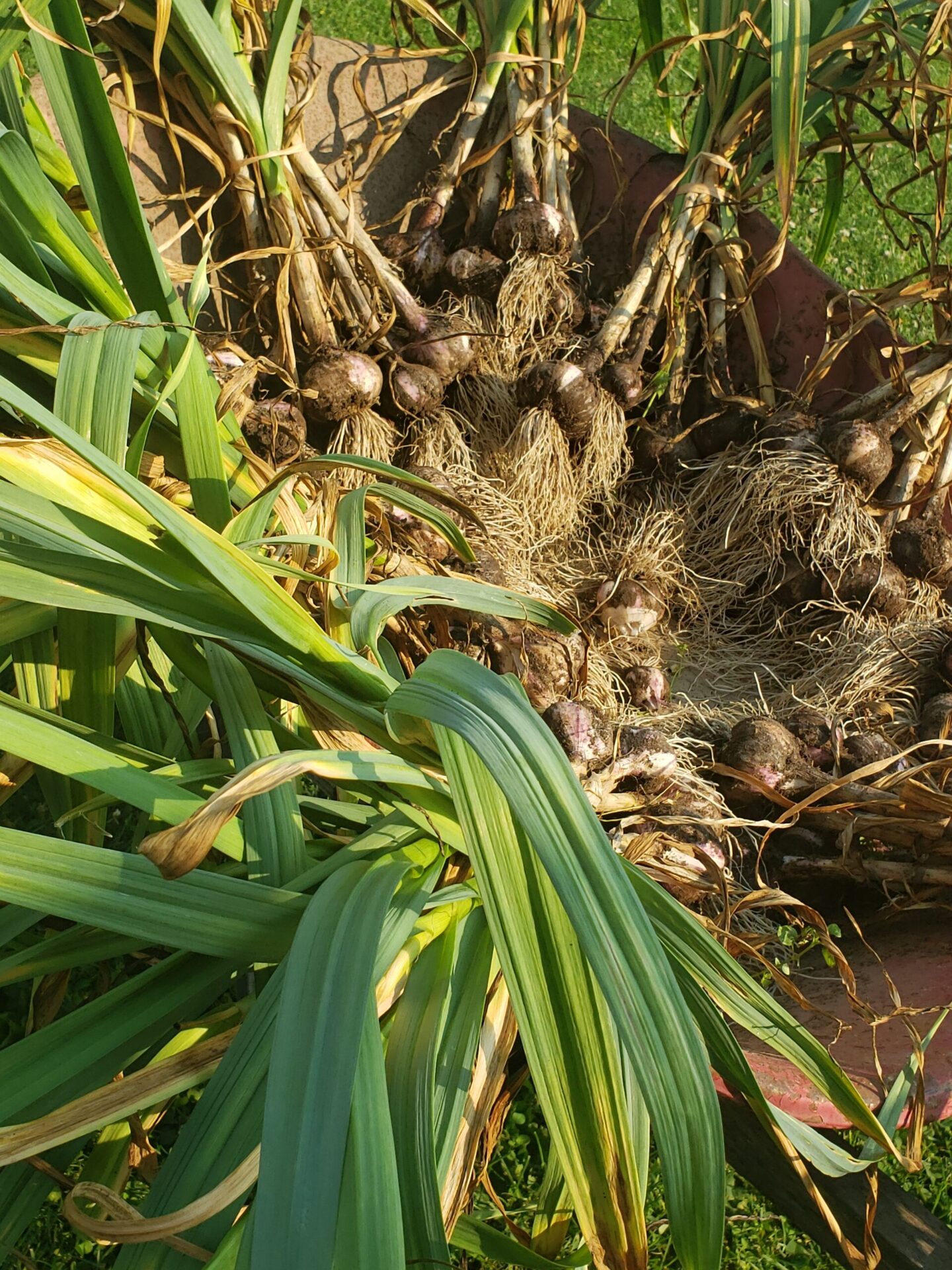Get to know Samantha from Green Pig Farm!!
Well, guys, I finally did it!! I met with Freddy Vasquez from FXV Digital, where we donned headphones and turned on the mics to talk about homesteading. This was the
What Does Green Pig Farm Grow in Their Garden?
We often get questions about what we grow in the garden, so we thought we’d share what we have planted this year, as well as how we preserve it. This
How to Cure, Prep, and Store Garlic
You’ve picked your garlic. But, now what? Let’s talk about how to cure, prep, and store garlic to get the maximum shelf life. (If you want to learn how to
How to Grow Garlic in 3 Easy Steps
Garlic. A cousin to the onion. Culinary deliciousness. Easy to grow. Have you wanted to grow garlic, but haven’t the foggiest on how to start? Here is a step-by-step guide



